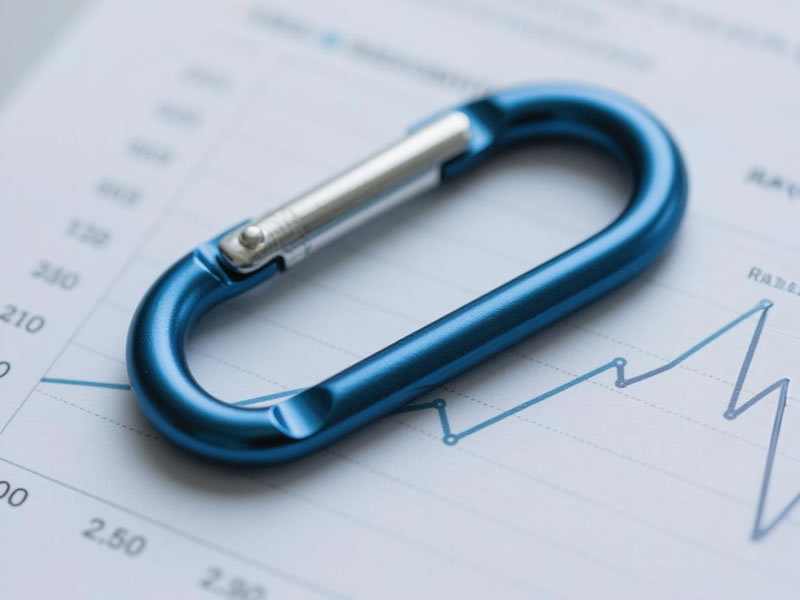Swivel carabiner failure rate statistics
The phrase "swivel carabiner failure rate statistics" taps into a fundamental climber concern: how often do these critical components actually break? While the search for precise, publicly available failure rate statistics (like "1 in 10,000 fail per year") is often frustrating, understanding the context and reality behind swivel carabiner reliability is crucial. Let's dive into the data we do have and what it truly means for your safety.

The Challenge with Raw "Failure Rate" Statistics
Unlike mass-produced consumer electronics, comprehensive, real-world failure rate databases for climbing gear like swivel carabiners simply don't exist publicly in a single, easily quotable number. Here's why:
- Low Incident Volume: Genuine, catastrophic failures of UIAA/EN certified carabiners during correct use are extremely rare. This makes statistically significant rate calculations difficult.
- Reporting Inconsistency: Many incidents go unreported, or reporting lacks crucial details (was it user error? Damage? Genuine defect?).
- Focus on Testing Standards: The industry relies on rigorous destructive testing standards (UIAA 121 / EN 12275) to guarantee a minimum strength under specific, controlled loads (major axis, minor axis, gate open, etc.), not long-term field failure rates. Swivels must pass these same tests as standard carabiners, plus additional tests for rotation function and strength.
What the Data & Research Does Tell Us
- Certified Strength is Extremely High: UIAA/EN certified swivel carabiners are tested to withstand forces far exceeding typical climbing loads (e.g., ≥20 kN major axis, ≥7 kN minor axis, ≥6 kN gate open). Failure under load within these parameters during correct use is statistically negligible.
- The Dominant Cause of "Failure" is Not the Carabiner Itself: Extensive accident analysis by organizations like the American Alpine Club (AAC) and national mountaineering bodies consistently shows:User Error is King: Cross-loading (loading over an edge or across the minor axis), gate interference (ropes/rock pressing the gate open), incorrect use (e.g., connecting to a belay device improperly), and rappel/lowering errors are the overwhelming causes of incidents involving carabiners.Damage is Critical: Wear from abrasion, cracks from impact (dropping on hard surfaces), corrosion (especially from seawater or chemicals), and gate malfunction due to grit are primary factors preceding failure. Swivels have more moving parts, potentially increasing vulnerability to grit or impact damage affecting rotation.Manufacturing Defects are Rare: Reputable brands have stringent QC. Recalls, while serious, are infrequent and highlight the effectiveness of oversight, not endemic failure rates.
Interpreting "Failure Rate" Through the Testing Lens
Think of certification testing as defining the "failure point" under worst-case instantaneous loading scenarios. The implied "failure rate" under correct use within design limits is effectively zero. The statistics become meaningful when we shift focus:
- What's the "rate" of cross-loading incidents? (Much higher than intrinsic carabiner failure).
- What's the "rate" of damage going unnoticed? (A significant risk factor).
- Does the swivel mechanism introduce vulnerabilities? Data suggests properly maintained swivels from reputable brands don't have inherently higher strength failure rates than non-swivels, but may be slightly more prone to functional issues (seizing) if neglected.
The Verdict: Beyond the Elusive Statistic
Searching for a single "swivel carabiner failure rate statistic" is less productive than understanding the proven safety framework:
- Buy Certified: Always use UIAA or EN certified swivel carabiners from trusted brands.
- Inspect Religiously: Before every use, check for cracks, grooves, sharp edges, gate smoothness, lock function (if applicable), and swivel rotation. Retire gear with ANY doubt or visible damage.
- Use Correctly: Avoid cross-loading, gate interference, and shock loads. Ensure the swivel is oriented appropriately for the application (e.g., preventing rope twist).
- Avoid Impact & Contaminants: Don't drop carabiners onto hard surfaces. Keep them clean; rinse if exposed to salt or grit.
- Replace Proactively: Industry consensus recommends retiring carabiners after significant impacts, visible wear, or every 5-10 years with heavy use, regardless of apparent condition.
Conclusion
While a magic "failure rate" number for swivel carabiners remains elusive, the evidence is clear: Certified swivel carabiners, when undamaged and used correctly, are exceptionally reliable. The true statistics that matter are those showing user error and gear damage as the dominant risk factors. By prioritizing certified gear, rigorous inspection, proper technique, and timely replacement, you leverage the proven strength and reliability engineered into these vital tools, keeping your focus where it belongs – on the climb. Don't fear the swivel; respect it, maintain it, and use it wisely.






